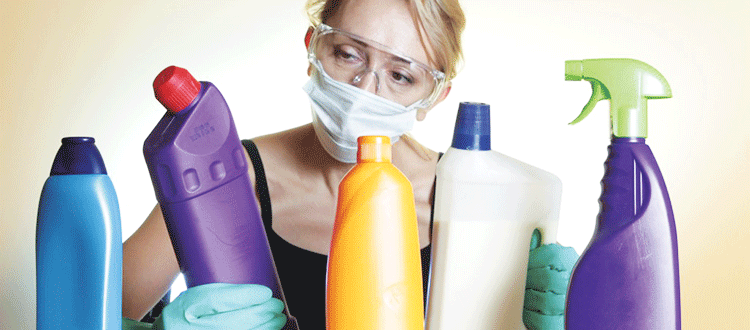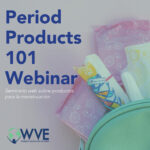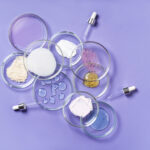Changing the Smell of Clean
 |
|
Lisa Bronner |
“It smells like vinegar in here,” my son said after I had been cleaning mirrors.
I assured him that the smell would soon dissipate.
He said, “I like it. It smells clean.”
And herein lies the difference. He has grown up with vinegar and tea tree and peppermint. All of these say, “Clean!” to him. When I started down the green road, I had to grow accustomed to the new smell of clean.
To me, growing up, the smell of clean was sharp, pungent, and nose scouring. It didn’t smell like any naturally occurring substance I knew of. When I smelled it, I felt reassured that everything was dirt and germ-free.
However, the lack of scent in many homemade cleaning recipes, and especially the lack of a lingering scent, can be a real roadblock to someone’s adoption of safer cleaners. Consumers learn to associate the smell of chemical cleaners with a sense of cleanliness, and can identify a product based on its smell. And they’re supposed to. The manufacturers spend loads of time and money to sell consumers on their products’ smell. Can’t you picture the commercial with the stylishly dressed and made up woman sniffing her house’s air with satisfaction? It must smell clean. And don’t we all want our house to smell clean like hers?
So what makes those nearly addictive smells? It is certainly not lemon essential oil, or any other essential oil, or other plant-derived natural fragrances. If it were, that fact would be well broadcast across their labels and advertising. And the products would also be a good deal more expensive. The chemical-cleaner fragrance is made up of synthetic substances, including phthalates, sensitizers, and allergens. Phthalates (pronounced without the initial “p”) are widely acknowledged as endocrine (hormone) disrupters and a cause of birth defects in boys. Sensitizers are chemicals that cause a substantial proportion of repeatedly exposed people or animals to develop an allergic reaction in normal tissue.
However, the troubling part is that there is no required ingredient disclosure for cleaning products. There’s actually a large loophole in personal care products around “fragrance” as well. “Fragrance” is considered proprietary information. It is a blend of chemicals that could contain anything, and many of the ingredients are given a ‘hazard’ label.
The fragrance can be the most toxic part about conventional cleaning products. Other aspects of them can be dangerous, but only if you touch or ingest them. Three-year-olds notwithstanding, the adults who do most of the cleaning aren’t likely to gulp them down. They take precautions to make sure little ones and furry friends don’t have access to them (still safer not to have them around at all). But what about breathing? It’s rather unavoidable. Every being in the room during and after the cleaning will be absorbing these fragrances. The fragrances added to these products are designed to be airborne. Their target: your sensory receptors then your lungs and your bloodstream. And the worst of it is, these fragrances don’t have to be there – they add nothing to the effectiveness of these products. They are added to the product for a variety of reasons: to mask unpleasant chemical smells, to create product loyalty, to leave lingering “clean” connotations, and to imply that the solutions are closely derived from nature.
Adjusting to new norms
With green cleaning there is a different smell of clean. The upside is that you get to decide what that smell is. If you prefer it, or if you or someone in your family is sensitive to essential oils, you can have no smell; that could be your smell of clean. In that case, add no essential oils to your cleaning solutions. The smell of vinegar will dissipate when it dries. If you want your clean smell to be oranges, add essential orange oil. If you prefer lemon, add essential lemon oil. If you prefer patchouli with a twist of cinnamon and lime, you can do that, too. That’s the great thing here: you are in control. You make the products; you can add anything you want to them. Have fun! Match your mood, the weather, your guests, your dinner.
Also, realize that essential oils have beneficial properties of their own. For example, lavender oil is very calming; peppermint oil is invigorating and a deterrent to animals and insects; tea tree oil is antibacterial.
Be sure you are buying pure essential oils, and not scented carrier oils. Do a little online research before you buy. (Frontier’s Simply Organic line and Aura Cacia line are reliable, but certainly aren’t the only good options.) The bottles are small and pricey, but a little goes a long way, so don’t be deterred by the price. One bottle can last for a couple years. Five drops goes into a quart solution, 20 into a mop bucket.
So instead of being waylaid by the different smells, turn this into an opportunity for personal expression.
Read the original post on ‘Going Green with Bronner Mom.’
Lisa Bronner is a stay at home mom of 3 and member of the Bronner family, of Dr. Bronner’s Magic Soaps. Lisa is motivated by stewardship—the idea that things have been entrusted to us, and that it is our job to maintain and nurture them—our health, our family’s health, our emotional and mental wellbeing, our homes, time and finances, and our earth, air and water. Her blog, ‘Going Green with a Bronner Mom’ tackles green cleaning, personal care, consumer education, and about 180 ways to use Dr. Bronner’s products.






